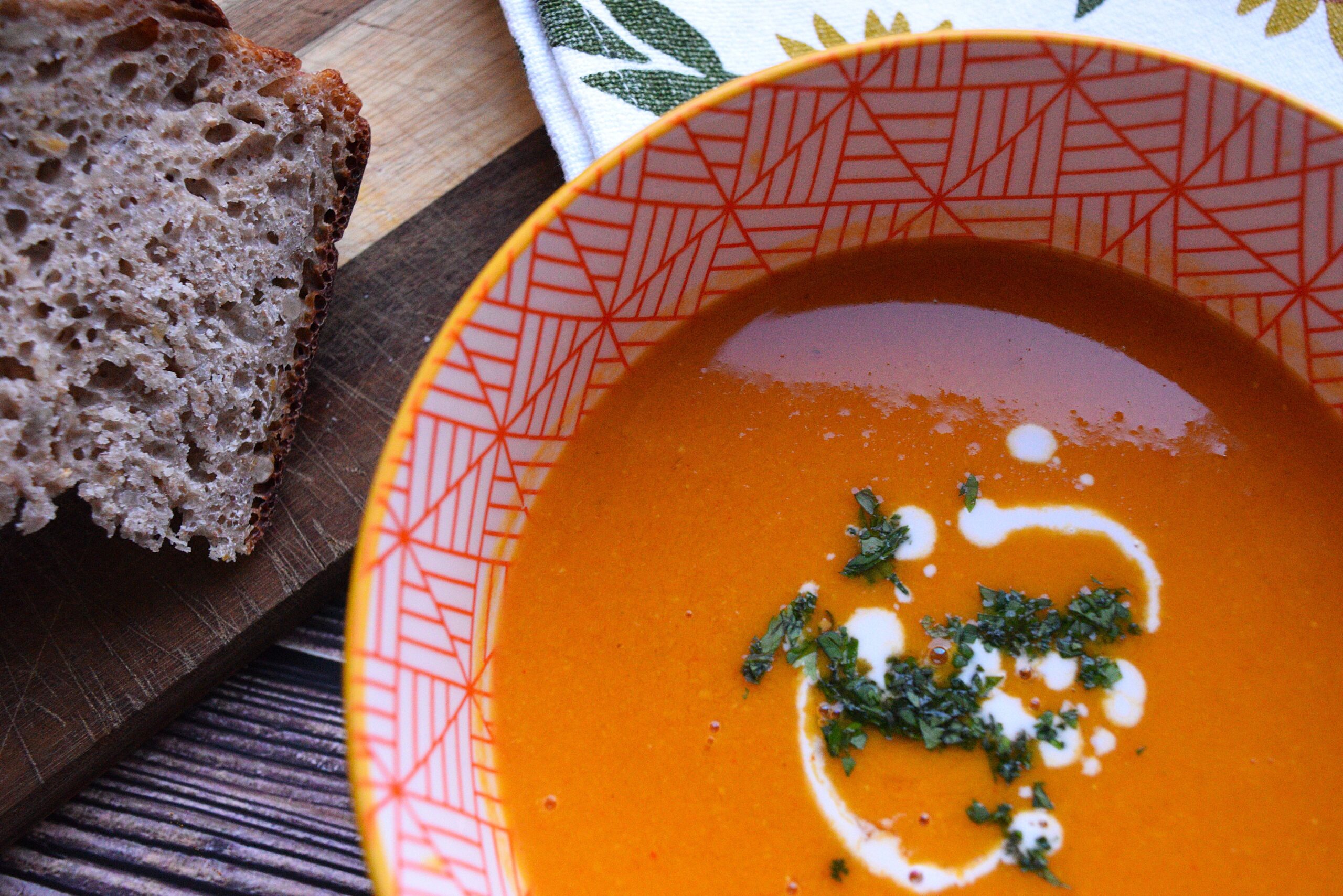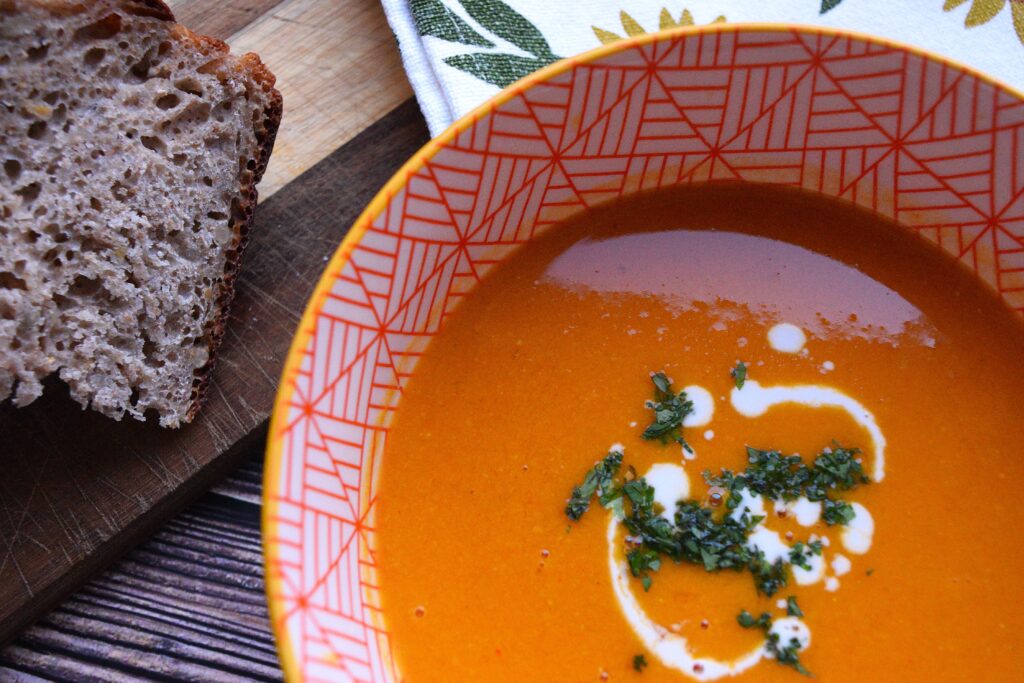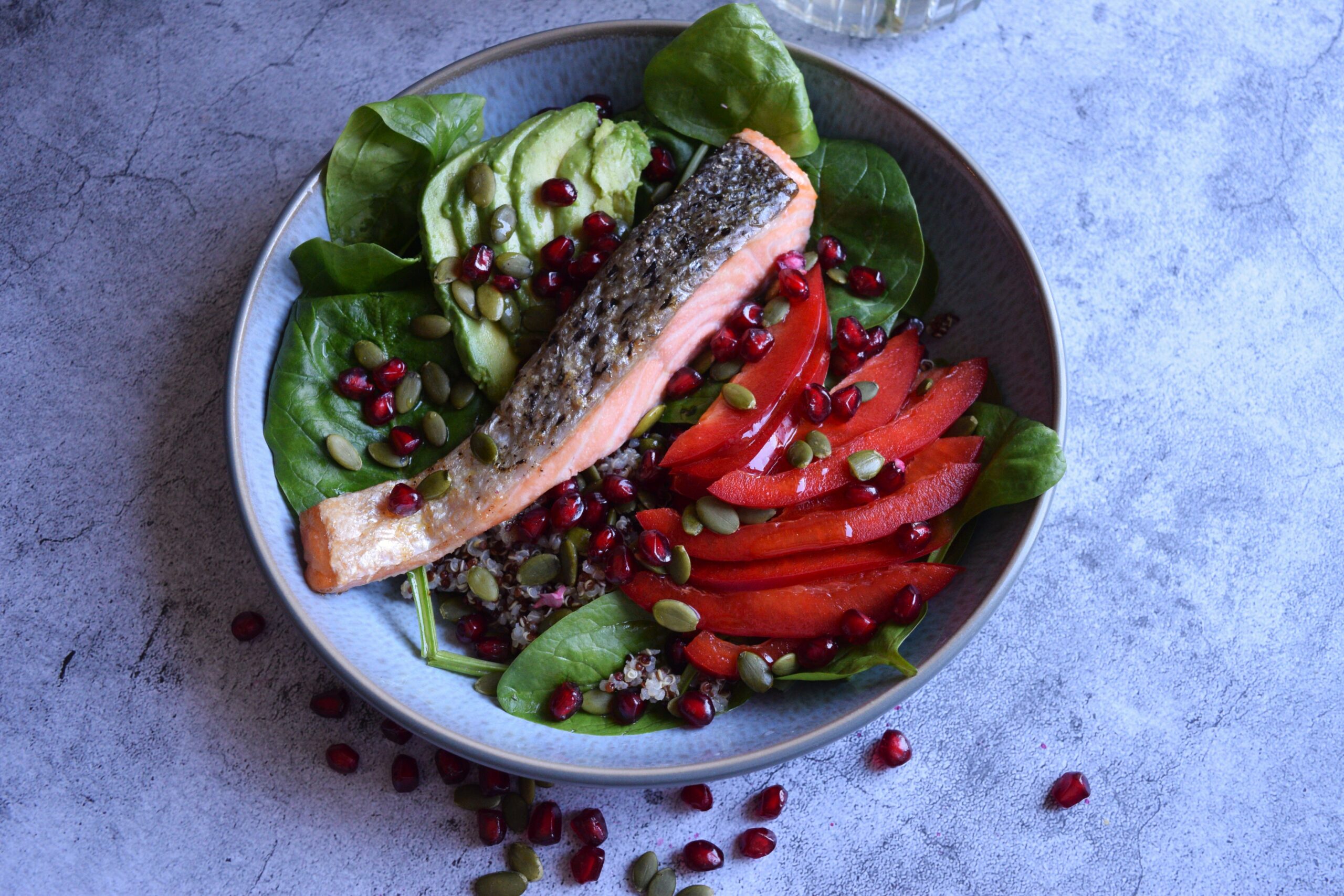It’s the start of 2025, and many of us are embracing healthier habits, including more mindful choices when it comes to food. If you’re looking for a meal that’s both satisfying and packed with nutrients, this Red Lentil Soup is just the thing. Perfect for Veganuary or any time you want a warm, wholesome dish, this soup is easy to make and bursting with flavor.
Why Choose Red Lentil Soup?
Red lentils are a hidden gem in plant-based cooking. They’re not only quick to prepare but also an excellent source of protein, fiber, and iron. Combined with colorful vegetables and warming spices, they create a soup that’s as delicious as it is nutritious.
This recipe is ideal for a cozy meal at home or as part of your meal prep for the week. Plus, it’s vegan, so it aligns perfectly with the Veganuary ethos of exploring plant-based foods.
Nourishing Red Lentil Soup
Difficulty: Easy4
servings312
kcal40
minutesIngredients
1 cup red lentils (rinsed and drained)
1 tbsp olive oil
1 onion (finely chopped)
2 carrots (grated)
2 celery stalks (diced)
3 cloves garlic (minced)
1 tsp ground turmeric
1 tsp ground cumin
1 tsp smoked paprika
1 can (400g) diced tomatoes
4 cups vegetable stock
1 cup coconut cream (optional, for creaminess)
Dash of fresh lemon juice (optional)
Salt and pepper to taste
Fresh cilantro or parsley for garnish
Directions
- Start with the Base
- Heat olive oil in a large pot over medium heat. Add the chopped onion, grated carrots, and celery. Cook for 5-7 minutes, stirring occasionally, until the vegetables are soft and aromatic.
- Add the Spices
- Stir in the garlic, turmeric, cumin, and smoked paprika. Let them cook for a minute or two to release their flavors.
- Simmer the Lentils
- Add the red lentils, diced tomatoes, and vegetable stock to the pot. Bring to a boil, then reduce the heat and simmer for about 20-25 minutes, until the lentils are tender and the soup has thickened.
- Optional: Blend for Creaminess
- If you prefer a smooth soup, use an immersion blender to puree it partially or completely. Otherwise, leave it chunky for a heartier texture.
- Finish with Coconut Milk and Lemon
- Stir in the coconut milk and squeeze in the juice of a lemon (if using) for a bright, fresh finish. Season with salt and pepper to taste.
- Serve and Enjoy
- Ladle the soup into bowls, garnish with fresh cilantro or parsley, and enjoy it with crusty bread or a side salad.
Recipe Video
A Bowl Full of Goodness
This Red Lentil Soup isn’t just comforting—it’s packed with nutrients to fuel your day:
- Red Lentils: High in protein and fiber to keep you satisfied.
- Turmeric: A spice known for its anti-inflammatory properties.
- Vegetables: Carrots, celery, and tomatoes add essential vitamins and antioxidants.
- Coconut Milk: Offers a creamy texture and healthy fats.
By choosing wholesome, vibrant ingredients, you’re giving your body the nourishment it deserves.
Mindful Eating Starts Here
When preparing this soup, take a moment to appreciate the colors, textures, and aromas of the ingredients. Mindful eating isn’t just about what’s on your plate—it’s about being present and enjoying the process of cooking and eating.
Customize Your Soup
The beauty of this recipe is its flexibility. Add a handful of spinach for extra greens, sprinkle some chili flakes for heat, or top it with nutritional yeast for a cheesy flavor. Make it your own!
Kickstart Veganuary with This Simple Dish
This Red Lentil Soup is a fantastic way to embrace Veganuary and start the new year on a healthier note. Whether you’re vegan, plant-curious, or just looking for a nutritious meal, this recipe ticks all the boxes.
Let me know if you give it a try—I’d love to hear your thoughts and any twists you add!
For more plant-based inspiration this January, visit Raspberry and Basil Veganuary series. 🍓🌿
Nutrition Facts
4 servings per container
- Amount Per ServingCalories312
- % Daily Value *
- Total Fat
16g
25%
- Saturated Fat 11g 56%
- Total Carbohydrate
34g
12%
- Dietary Fiber 13g 52%
- Sugars 6g
- Protein 10g 20%
* The % Daily Value tells you how much a nutrient in a serving of food contributes to a daily diet. 2,000 calories a day is used for general nutrition advice.





